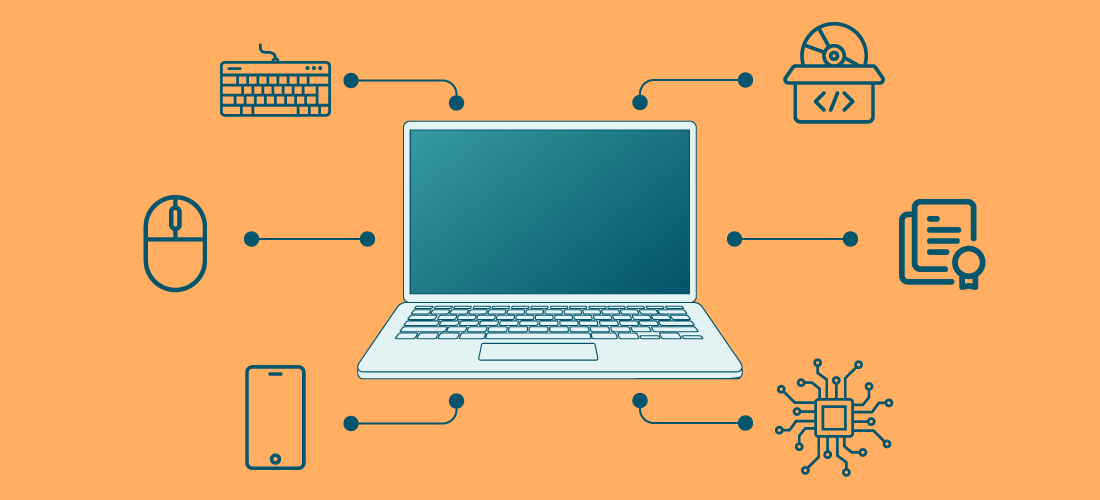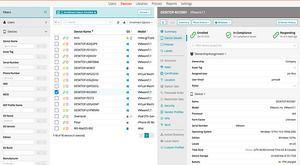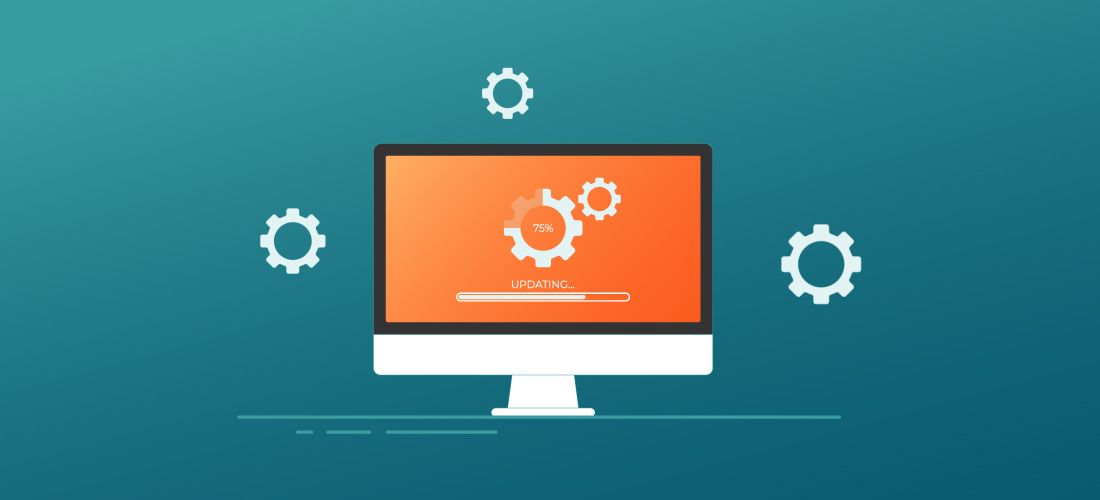
The role of IT asset management (ITAM) has expanded beyond its scope of simply keeping track of IT assets. In many organizations it has become a strategic imperative. By following effective IT asset management best practices, organizations can have far-reaching benefits that include reducing unnecessary expenses and minimizing risks when it comes to the complexities of shadow IT and device lifecycle management. From hardware to software, servers to cloud services, the sheer complexity of modern IT environments demands a proactive and comprehensive approach.
In this article, we’ll explore the reasons why businesses need to prioritize ITAM, outline best practices for successful IT asset management, as well as common mistakes that organizations make.
What is IT asset management?
Interpretations of what ITAM means can vary. At a basic level, IT asset management involves keeping track of a company’s valuable assets, such as devices and software, including their location, ownership, and usage.
According to Gartner, ITAM provides an overview of the costs and potential risks associated with the lifecycle of technology assets for the purpose of improving decisions related to technology strategy, architecture, funding, contracts, and sourcing. However, there’s a lot of nuances to it. For most people, ITAM revolves around inventory management and maintaining visibility and control over valuable resources.
What assets should be managed?
IT asset management is tailored based on an organization’s specific needs and the monetary value associated with its assets. Anything that exceeds a certain dollar amount is worth tracking. Depending on your company’s policies, this amount could be set at $100, $500, or a higher other value. Tracking assets is crucial for good governance and financial responsibility. If your company spends money on it, it’s likely an asset that should be accounted for.
It’s important to know what items exist on your network and understand their usage for effective spending and risk mitigation.
Typically, assets can be divided into consumable and non-consumable categories.
Consumable assets refer to items that are gradually used up during business operations and cannot be reused in their original state and need to be replenished regularly, such as keyboards, printer toner, etc. Consumable assets help maintain the smooth functioning of a business but are not considered long-term investments like other types of assets, like hardware or software.
Non-consumable assets are items that are not consumed or depleted during day-to-day operations and retain their value over an extended period of time. They are typically used repeatedly and may have a longer life span compared to consumable assets. Non-consumable assets can include hardware, software, licenses, service agreements and digital assets (headsets, key cards, key fobs).
Both consumable and non-consumable assets that your company invests in fall under IT asset management.
Why is IT asset management necessary?
IT asset management maximizes the value of IT investments, minimizes risk, ensures compliance and supports the organization’s strategic objectives.
Eliminating waste
Asset management allows organizations to track the procurement, deployment, and usage of assets, identifying areas where resources may be underutilized or wasted. Managing these assets effectively helps IT departments control costs and plan expenses effectively to increase value for company shareholders.
Reducing risk and increasing visibility
ITAM involves not only assessing the assets we have but also the risks associated with them and potential threats that could compromise them. By providing more visibility into endpoints, IT teams can understand how these assets are utilized, what software is running on them, and whether they are adequately protected and meeting the proper security requirements.
Software asset management
Software asset management (SAM) is a method for determining software procurement and disposal actions, including ways to identify and remove unused or seldom-used software, consolidate software licenses, or transition to alternative licensing models. SAM comes with the challenges of complex licensing requirements, subscription models and understanding usage patterns. Policies and procedures regarding asset procurement and an active inventory solution help to avoid the risks of unlicensed software and potential audits.
One major concern with software management involves shadow IT and users having local admin rights. This can lead to unauthorized installations and pose potential security risks. Removing local admin rights and actively managing software gives organizations greater control over the environment and ensures that only approved and secure applications are installed.
Additionally, ITAM information supports budget proposals, especially when dealing with aging software and planning for replacements.
For end-of-life and legacy software, employees may be reluctant to part with outdated systems, such as Windows XP machines. However, obsolete software is more susceptible to attacks. To understand the potential risks, employees should be educated on the importance of updating their systems for enhanced security.
Shadow IT
As mentioned, Shadow IT is a real concern. Users may bring in unauthorized devices and connect to the network, exposing your other systems to potential risks. It’s crucial to have visibility into what’s on your network. There have been instances where Raspberry Pis – small, yet powerful computers – have been embedded with AI capabilities, raising all types of security concerns. Discovery tools can help monitor for unauthorized devices and help ensure network safety.
The life cycle of device management
Life cycle planning involves not only individual devices, but entire fleets of devices. When it comes to the life cycle management (LCM) of assets, having accurate inventory information supports budget proposals, especially when dealing with aging equipment and planning for replacements. Many companies don’t replace all their laptops every five years, so it’s essential to plan and track replacements. Without IT asset management, new employees may inherit outdated devices with no warranty information.
Planning involves determining the expected lifespan of devices, considering extended warranties, and deciding when to repair or replace them. Tracking these factors helps optimize device life cycles and avoid problematic models.
Financial planning and cost analysis
Once IT administrators and department heads implement a system to track purchases, locations, and other details about their assets, it becomes much easier to justify budget requests.
When you approach upper management asking for a significant budget allocation, having concrete data to support your request greatly increases your chances of success. For instance, if you can show that 80% of your devices are over 10 years old, with a service request increase of 90%, it paints a clear picture of the need for equipment replacement.
Similarly, when it comes to software management, understanding the types of licenses and the actual usage of software applications is crucial. While bundled packages may seem like a good deal, it’s essential to assess whether your organization truly needs all the included titles. By analyzing user needs and usage patterns, you can make more informed decisions about software licensing to optimize costs and align resources with actual requirements.
Best practices for IT asset management
Inventory discovery
It’s crucial to thoroughly inventory your networks to understand the items you own and the items you may not own. A robust asset management solution should include inventory discovery, enabling it to scan networks to identify all assets, authorized or unauthorized. Effective management of your environment is impossible without a clear understanding of its contents – you can’t manage what you don’t know you have. Therefore, it’s essential to have a complete picture of your assets to manage them effectively and ensure their security.
Using unlicensed software can lead to hefty fines and prolonged audits that may involve legal proceedings and negotiations. Audits can drag on for years, depending on who’s performing them, and the complexity of the software involved. Given these risks, organizations are understandably motivated to stay compliant and manage their assets effectively.
Another aspect to consider is whether you’re purchasing an excessive number of software licenses without realizing it. Surprisingly, many organizations lack clear procurement processes, with department managers sometimes making independent software purchases using corporate cards or even resorting to retail stores for urgent needs. These challenges are not uncommon, especially among small to medium-sized companies experiencing growth without established procurement procedures.
Stakeholder buy-in
Having a champion at the executive level is important, but it’s equally important to gain buy-in from all stakeholders. You can’t simply impose changes – you need everyone on board. Even with the best plan and tools, if department managers aren’t following a policy, it’ll be an uphill battle. So, the key is frequent, detailed, and convincing communication and engagement. People need to understand why IT asset management matters, how it benefits everyone, and how it contributes to security and wise spending.
Transitioning or expanding a company’s ITAM requires input from those who use the tools and solutions, even if it means changing old habits. Involving people in the process, from executives to end-users, ensures that their knowledge and experience are leveraged. Ultimately, success hinges on people and their commitment, input, and involvement.
Training to avoid configuration issues
Investing in training and onboarding upfront ensures successful adoption of ITAM solutions across departments. Without proper training, software quickly becomes shelfware, sitting unused because users don’t know how to leverage it effectively or it isn’t configured to their business needs. Even free software included in enterprise agreements can go to waste if users lack the skills to implement it.
It’s also best practice to use services to integrate your solution into existing systems and customize it for specific business requirements.
Automate
Aim to automate tasks as much as possible and standardize processes to ensure consistency. This might involve streamlining policies and procedures to simplify user interaction with your ITAM solution. For instance, consider automating tasks like importing licenses and tracking warranties to streamline operations and improve accuracy. By implementing such automation, you can significantly enhance your workflow and overall effectiveness.
Establish purchasing processes
To eliminate unauthorized purchases, consider restricting access to payment methods such as P-cards. By limiting the ability for discretionary spending, you can prevent unplanned purchases. Additionally, standardizing purchase policies can help enforce consistent practices across the organization, making it easier for users to adhere to established guidelines.
Define policies and procedures
For all these aspects of IT asset management, clear documentation should be laid out on how things should be done. Policies provide a framework for consistent decision-making across the organization and promote uniformity in ITAM practices. Clearly defined procedures also help reduce the likelihood of data breaches or non-compliance.
Organizations should invest in training so that employees are equipped with the skills and knowledge to effectively use the tools provided.
Common mistakes in IT asset management
The ultimate concern of ITAM is the security of your data. The rising incidents of cyber threats can be linked to inadequate IT asset management, which can present itself in many forms.
Decentralization
Decentralization is a significant problem in IT asset management. It occurs when different individuals use separate spreadsheets or homemade solutions to track IT assets. Without proper documentation, data can be lost, especially when employees change roles.
While some companies cobble together data from various sources, the absence of a comprehensive ITAM solution may result in incomplete or inaccurate information about the organization’s assets, especially concerning ancillary devices.
Homegrown systems
Many companies or individuals often develop their own solutions for IT needs. While this approach isn’t inherently problematic, it can lead to issues down the line.
Building a custom ITAM solution requires significant time and investment. It involves designing, developing, testing, and maintaining the software, and as technology evolves and organizational needs change, the solution may require frequent updates and patches to remain effective. Without dedicated support and resources, maintaining the solution can become burdensome.
Additionally, if the person who created the solution leaves the company, there may be challenges in servicing or modifying it. There also might not be anyone with the necessary skills to address issues that arise with the custom solution.

Patch, secure, and manage every endpoint
Open-source solutions
Using open-source solutions can be beneficial in certain contexts, but it’s essential to consider the potential risks, especially if your company is dependent on its assets. While open-source projects may be developed by individuals for free, if the developers behind the project move on to other endeavors or cease their support, your company could be left without adequate assistance. This could result in the need to rebuild or find alternative solutions, causing disruptions and wasted resources.
Further, open-source solutions may not offer the same functionality as commercial alternatives, potentially leading to gaps in security or visibility.
Open-source solutions may be suitable for smaller companies with fewer dependencies, but larger enterprises should carefully evaluate the long-term risks.
Conclusion
A proactive approach to IT asset management has evolved to a strategic necessity in modern IT environments. By adhering to effective IT asset management practices, businesses can unlock cost reductions, mitigate risks, and maintain complete picture of organizational assets. Embracing robust IT asset management is not just prudent, but essential for organizational success.



